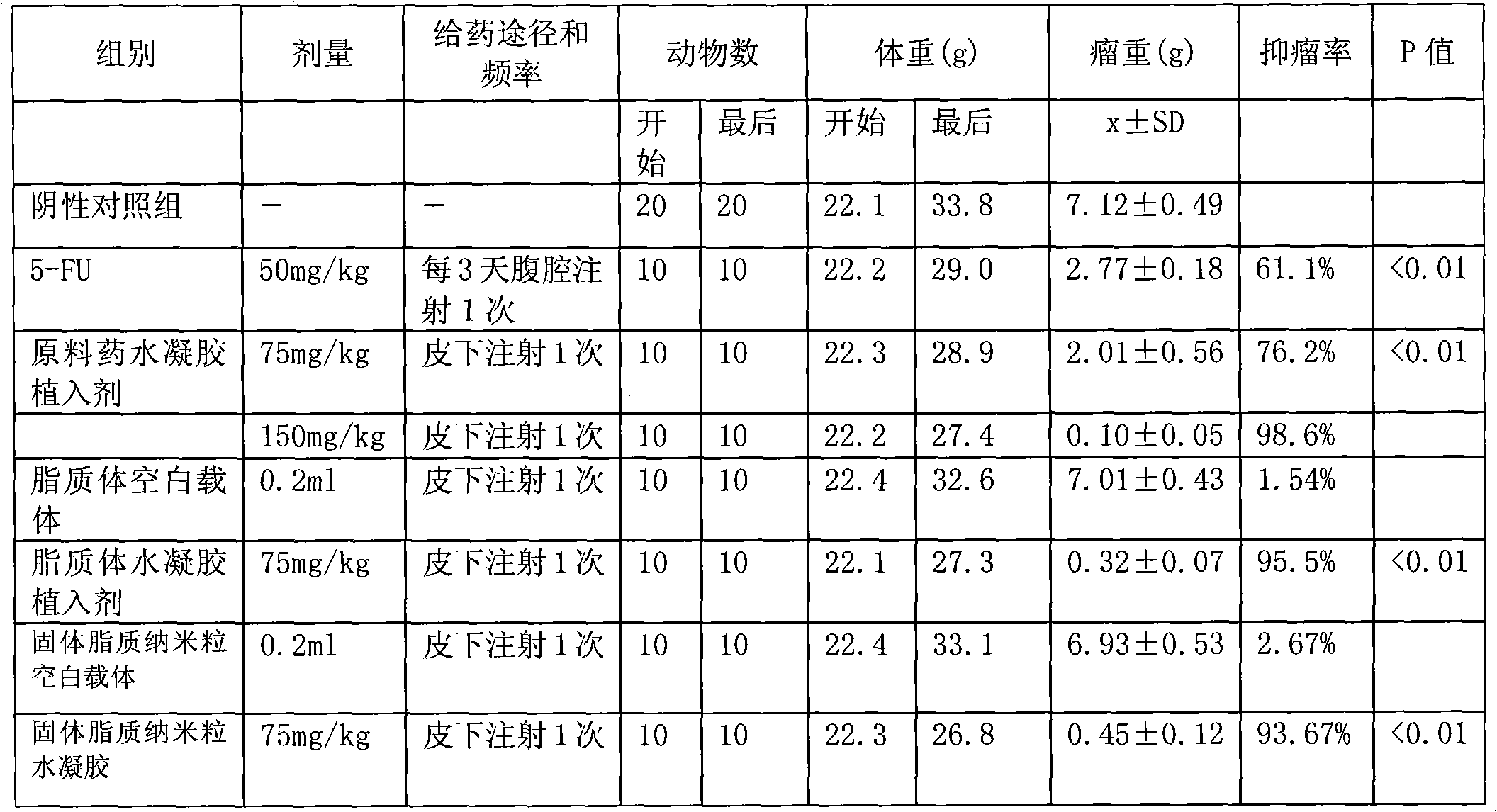Hydrogel nanoparticles used as injectable subcutaneous implant agent
A hydrogel and nanoparticle technology, applied in the field of medicine, can solve problems such as difficulty in ensuring drug efficacy or toxicity, high toxicity of anticancer drugs, and easy drug resistance, so as to avoid drug resistance, reduce side effects, and comply with sex enhancing effect
- Summary
- Abstract
- Description
- Claims
- Application Information
AI Technical Summary
Problems solved by technology
Method used
Image
Examples
Embodiment 1
[0013] The present invention can be provided by following embodiment in concrete implementation:
[0014] 23% polyethylene glycol-poly(lactic-co-glycolic acid) copolymer (wherein the molar ratio of lactic acid / glycolic acid of the poly(lactic-co-glycolic acid) material is 3:1) and 77% water are mixed, placed in the refrigerator to fully swell, into a solution-like hydrogel solution;
[0015] Preparation of stable 2-methoxyestradiol (2ME) liposomes, ether injection method: Weigh 240 mg of soybean lecithin, 24 mg of cholesterol, 10 mg of 2ME into a vial, add 4 ml of ether to dissolve into an oil phase; weigh Poloxamer 1885mg, add 5mlPH 7.4PBS buffer solution to dissolve into the water phase; at 40℃, under 1000r / min magnetic stirring, slowly and uniformly drop the oil phase (inhaled into a 1ml syringe) into the water phase, continue for half an hour to volatilize the diethyl ether and then Continue to stir for 30 minutes to obtain a milky white suspension. After ultrasonicating ...
Embodiment 2
[0017] 23% polyethylene glycol-poly(lactic-co-glycolic acid) copolymer (wherein the molar ratio of lactic acid / glycolic acid of the poly(lactic-co-glycolic acid) material is 3:1) and 77% water are mixed, placed in the refrigerator to fully swell, into a solution-like hydrogel solution;
[0018] To prepare 2-methoxyestradiol solid lipid nanoparticles, weigh 0.48g of glyceryl monostearate and 0.016g of 2-methoxyestradiol and mix them and place them in a water bath at 80°C to melt them completely. Afterwards, stir at 1000rpm speed for 10min as the oil phase; take 0.18g Tween 80, 0.06g poloxamer 188 and 8ml of ultrapure water and mix them and place them in the same water bath to form a solution, which is the water phase; ℃, under the condition of 1000rpm, first add the water phase dropwise to the oil phase at the same temperature at a speed of 10ml / min, and then continue to stir for 10min; Ultrasonic the probe for 8min to obtain the solid lipid nanoparticle suspension of 2-methox...
PUM
| Property | Measurement | Unit |
|---|---|---|
| Particle size | aaaaa | aaaaa |
Abstract
Description
Claims
Application Information
 Login to View More
Login to View More - R&D
- Intellectual Property
- Life Sciences
- Materials
- Tech Scout
- Unparalleled Data Quality
- Higher Quality Content
- 60% Fewer Hallucinations
Browse by: Latest US Patents, China's latest patents, Technical Efficacy Thesaurus, Application Domain, Technology Topic, Popular Technical Reports.
© 2025 PatSnap. All rights reserved.Legal|Privacy policy|Modern Slavery Act Transparency Statement|Sitemap|About US| Contact US: help@patsnap.com


